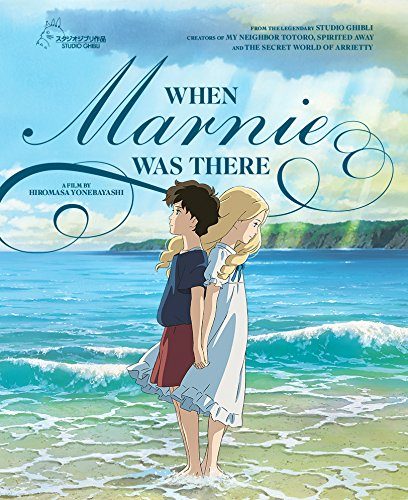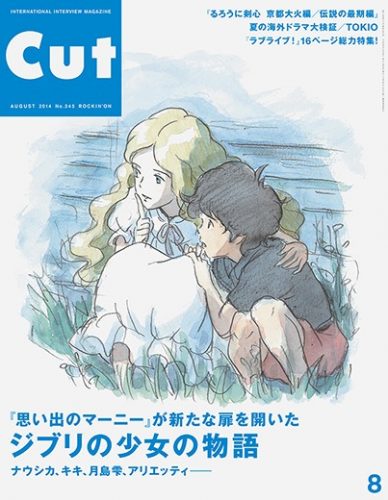
When one thinks of Studio Ghibli, one remembers fondly the classics, the beautifully directed and wonderfully written stories. Studio Ghibli has a reputation, and its audience carry a set of expectations, especially given the impressive resume of Hayao Miyazaki, one of the great minds of the studio.
However, Omoide no Marnie (When Marnie Was There) is a Ghibli film directed and written by Hiromasa Yonebayashi. At the time, he was known for one other work, The Secret World of Arietty (2010). To properly convey the Ghibli spirit, Yonebayashi had to succeed under pressure and expectations. The result is a study on why Ghibli remains beloved today.
To carry the Ghibli atmosphere, he fashions a fantasy from a seemingly normal and relatable world, creating a distinct inside/outside space. To include a diverse audience, the dialogue is direct, while preserving an air of mystery. Lastly, the film’s visuals evoke audiences to question and learn about the story, establishing a believable magic: love.
An Outsider and Insider: Anna’s Monologue
At the start of the film, the protagonist is introduced as a secluded child. As Anna sketches her surroundings, her internal monologue plays, “In this world, there is an invisible magic circle. There’s an inside and outside.”
As we become familiar with Anna, we learn she rarely expresses herself openly. In particular, her mother mentions this when a doctor checks on Anna’s health. In fact, how we learn about Anna is mostly through her thoughts.
By having a contrast between external dialogue and internal monologue (Anna’s thoughts), a noticeable division occurs—how Anna pushes others away and becomes an outsider. From the onset, the movie makes viewers aware of spaces and where Anna falls within them.
Effectively, this means that speech can be direct (such as stating observations to the audience) or indirect (such as implying character). Using both aspects of speech helps establish its setting, a space between magic and reality.
Bridging the Gap Between Magic and Reality
As stated previously, the movie establishes space early, introducing viewers to a concept they can analyze sooner. Just as its dialogue divides two worlds (inside and outside), the visuals do the same.
Anna considers herself an outsider, but she’s not the only one.Her name (Anna) and her eyes (blue), make her stand out from her Japanese colleagues and even family. Anna, who has lost her mother, feels isolation not just because of her physical traits, but from her unfortunate loss. From this, we understand logically why she pushes herself away. Her own looks, she feels, reinforces her otherness.
To help bridge the gap—to connect her to others—Marnie is an important figure. She, just like Anna, is visually different with her blonde hair, blue eyes, and Western outfits. Her family situation (parents constantly gone), her treatment by her servants, and her loneliness help the two relate.
Furthermore, Marnie connects Anna to her own world, one with Western parties in a famous mansion, one that fades with the morning tide, changing the mansion like a dream. Marnie is a figure able to pass through “different worlds,” and this is reinforced by her sudden disappearances, the sudden changes to the mansion, and even the lighting of the water, dividing the lake in two—one side reality, the other side dream.
Marnie is a liminal figure, connecting Anna’s emotions back again, and returning a little magic into her world.
An Air of Mystery: A Delicate Balance
When Marnie Was There is a film that plays with information. Visually, it implies association through character similarities and visual ideas. Through its dialogue, it can clarify plot details and unveil character. However, the film is never too revealing. Its mystery is much like the mansion’s fog, covering just enough to keep things hidden.
Magic, in the film, isn’t directly stated. It exists with implications, enough to surmise why things happen. Marnie, being associated with another world, is oddly logically deduced. Through association with her setting, the audience can deduce Marnie’s ethereal nature through changes in plant life (Mansion’s overgrowth), her way of speaking, and the coming of the tide. Her diary entries and constant disappearances make her delicate existence obvious.
To keep magic “alive” in this film, it needs an air of mystery. A surprise to keep viewers engaged in a delicate balance of fantasy and reality. By implying connections, it does not state the reasons for why things work. Its focus, instead, is to create a relatable and believable connection: love, the real magic of the film.
Final Thoughts

When Marnie Was There is an excellent example of Studio Ghibli’s talent. Its new director experiments with a modern setting, balancing fantasy and reality. Through careful decision-making, the film is inclusive for a wide audience, allowing multiple age groups to understand and enjoy the film’s story through its dialogue and visuals.
If you’re a fan of Ghibli films or curious about learning how a different director influences the studio’s work, this movie is for you.

